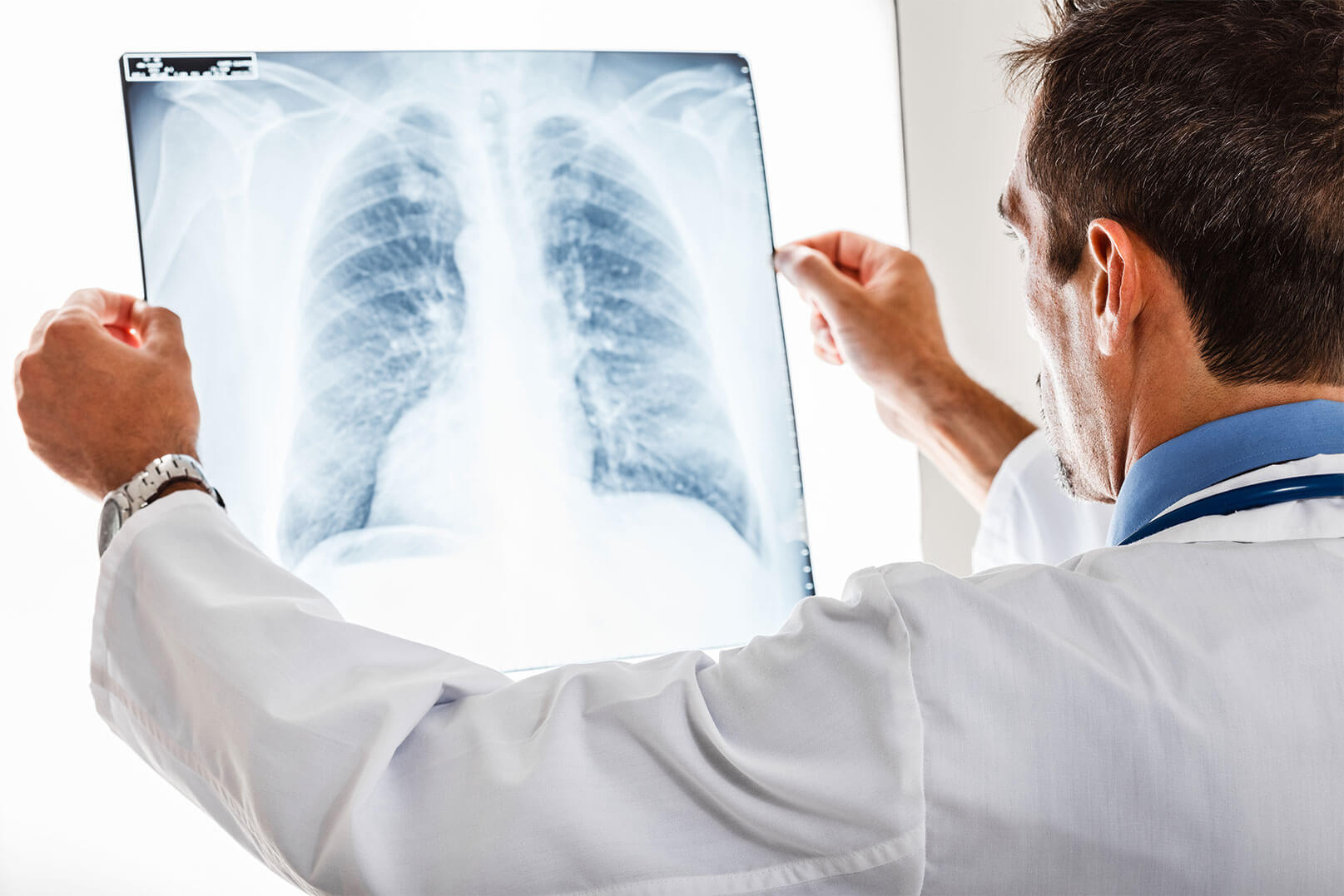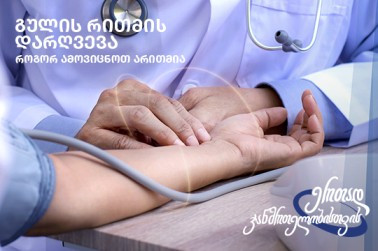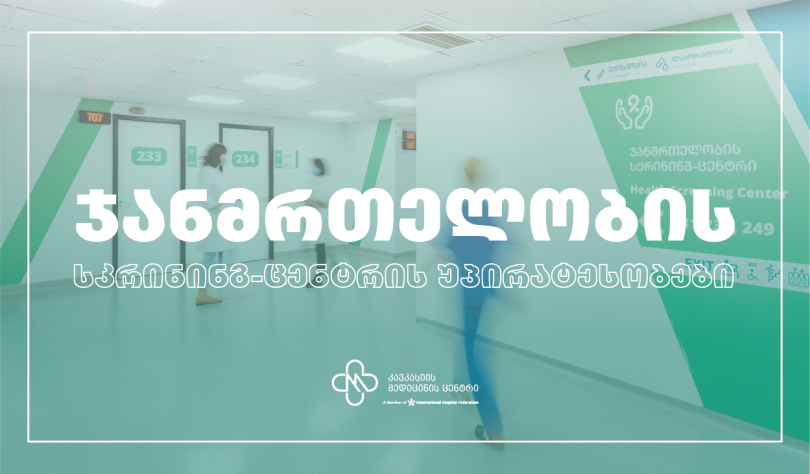


Blog
Lung cancer treatment abroad
13 December 2019

Lung cancer is one of the most common forms of cancer in the world. In 2018, 9.6 million people died from the mentioned disease. Millions of people are diagnosed with lung cancer each year. However, high rates of mortality do not mean, that the disease is incurable. Lung cancer treatment is successfully carried out in many countries.
The exact cause of the disease is unknown. The World Health Organization names the main risk factors that are linked to development of the disease.
Among such factors is smoking tobacco. Smoking is the cause of the disease in 90% of the cases. Not only smokers suffer from lung cancer, but people living with them in the same buildings, i.e. passive smokers.
Inhalation of radon and asbestos smokes can trigger the development of cancer. Radioactive exposure and contact with physical and chemical carcinogens can lead to the development of the disease.
Changes in lungs and viral infections may result in cancer. The risk group includes men above 50 years, as well as people whose relatives suffered from cancer - genetic predisposition.
WHO experts state aging as the main factor of cancer development. With age, the renewal of body cells is slower, and the risk factors for cancer development only accumulate. That is why among young people under 20 the disease is rarely detected. Half of the lung cancer cases consist of people aged 45-60. Men are five times more likely to suffer from lung cancer than women.
The effectiveness of the disease treatment depends on the stage at which the cancer was detected. Cancer treatment at the early stages leads to good results - some patients permanently get rid of the disease. Late detection of lung cancer often leads to the death of the patient.
Selected treatment methods directly affect potential healing. A fatal outcome occurs within 2 years if the disease is not treated at all. Surgical treatment increases patient survival by 30% and the use of several treatment methods together increases the chances of recovery.
At the first stage, the presence of lung cancer can be expressed by increased fatigue, weakness, decreased working ability, appetite loss, shortness of breath and cough, which eventually becomes permanent. As these symptoms are not specific, patients often do not pay attention to them and refer to doctor only when they begin to experience pain or a strong sense of discomfort.
At the later stages, the patient may experience chest pain, in the side where the tumor is located. A cough is accompanied by bloody sputum. Weight drops rapidly. The patient's voice becomes hoarse, his fingers and toes swell.
Symptoms of lung cancer include swallowing disorders and swollen lymph nodes above the collarbone.
If lung cancer is suspected, an endobronchial ultrasound scanning is performed as well. Endobronchial ultrasound scanning is able to detect tumors, the size of which is several millimeters. The method is exact and safe.
Broncho-pulmonary electromagnetic diagnosis allows to detect a tumor at an early stage of development and choose the treatment that is necessary.
Tumor markers blood test is one of the most popular examinations if there is a suspicion for cancer. However, the level of tumor markers may remain normal, while doctors can detect atypical cells during the sputum examination. That is why the tumor markers blood test is an auxiliary method for the diagnosis of lung cancer.
CMS Hospital is equipped with the latest equipment and modern technologies and offers patients the diagnosis of oncological diseases. Technologies owned by CMC Hospital make it possible to see and recognize cancer during the cellular stage.
CMC Hospital offers medical services not only to residents of Georgia but to foreign patients as well. Caucasus Medical Center is a medical tourism hub in the region. Patients prefer CMC because of the quality of medical care, highly qualified doctors and reasonable prices.
Doctors and nurses of the center have an impressive working experience abroad. The center collaborates with world-famous hospitals and leading specialists; world-class specialists arrive to the clinic as well. The hospital diagnosis cancer and carries out programs together with the Ministry of Labour, Health and Social Affairs of Georgia.
CMC Hospital offers many methods of treatment for lung cancer. The main lung cancer treatments include surgical treatment, chemotherapy, and radiotherapy. These treatment methods can complement each other.
Doctors at the CMC Hospital use modern, minimally invasive methods - using tiny video cameras during surgeries. Such operations are not so painful and help patients to recover faster.
During radiotherapy, the tumor is exposed to radiation. Tumor cells are more sensitive to radiation than healthy tissues, so they die faster. Radiation therapy is used for small cell and non-small cell types of cancer.
Radiation therapy is divided into remote radiotherapy and high dose-rate brachytherapy. Remote radiotherapy involves irradiating cancer cells with an external source that is not located in the human body. During the high dose-rate brachytherapy, a radiation source is implanted into the patient's body. It can be located both next to the tumor, and directly inside the malignant tumor.
The oncology center uses modern methods of treating lung cancer, such as IMRT Rapid Arc, when only tumor cells are exposed to radiation and healthy tissues remain intact.
This method can be used both before and after surgery. Chemotherapy can also be prescribed during the cases when the patient has already undergone a course of radiotherapy. In the advanced stages of lung cancer, chemotherapy is almost the only treatment.
For the patients of the Caucasian Medical Center, the latest drugs are available for the treatment of lung cancer with chemotherapy. Experienced doctors will select the right drug and dose.
If you intend to cure lung cancer, you should not be limited to hospitals located only in your city. Referring to a foreign clinic is an affordable option for everyone.
In order to become a patient of the CMC Hospital, you need to fill out an application form, upload documents and indicate which medical services you need. Then you need to choose a convenient time for an appointment with the doctor, pay the cost of services and begin treatment.
The hospital provides free medical concierge services that will take care of administrative matters - booking tickets, finding a hotel and an interpreter. The concierge meets the patient at the airport, carries him to the clinic. Our medical concierge will accompany you at the clinic during the appointment and will help you to organize a trip to Georgia after undergoing treatment.
Doctors of the medical center will support you at all stages of treatment. The hospital will provide a transfer from the hotel to the airport as well.
Lung cancer: causes and prognosis of treatability
Lung cancer is a malignant lung tumor, during which pathological abnormal cells grow in the tissues of lungs and bronchi. Cells begin to divide and form a tumor.The exact cause of the disease is unknown. The World Health Organization names the main risk factors that are linked to development of the disease.
Among such factors is smoking tobacco. Smoking is the cause of the disease in 90% of the cases. Not only smokers suffer from lung cancer, but people living with them in the same buildings, i.e. passive smokers.
Inhalation of radon and asbestos smokes can trigger the development of cancer. Radioactive exposure and contact with physical and chemical carcinogens can lead to the development of the disease.
Changes in lungs and viral infections may result in cancer. The risk group includes men above 50 years, as well as people whose relatives suffered from cancer - genetic predisposition.
WHO experts state aging as the main factor of cancer development. With age, the renewal of body cells is slower, and the risk factors for cancer development only accumulate. That is why among young people under 20 the disease is rarely detected. Half of the lung cancer cases consist of people aged 45-60. Men are five times more likely to suffer from lung cancer than women.
The effectiveness of the disease treatment depends on the stage at which the cancer was detected. Cancer treatment at the early stages leads to good results - some patients permanently get rid of the disease. Late detection of lung cancer often leads to the death of the patient.
Selected treatment methods directly affect potential healing. A fatal outcome occurs within 2 years if the disease is not treated at all. Surgical treatment increases patient survival by 30% and the use of several treatment methods together increases the chances of recovery.
Symptoms and signs of lung cancer
At the initial stage, the disease is often asymptomatic. As the tumor grows, the patient may develop symptoms indicating the presence of the disease.At the first stage, the presence of lung cancer can be expressed by increased fatigue, weakness, decreased working ability, appetite loss, shortness of breath and cough, which eventually becomes permanent. As these symptoms are not specific, patients often do not pay attention to them and refer to doctor only when they begin to experience pain or a strong sense of discomfort.
At the later stages, the patient may experience chest pain, in the side where the tumor is located. A cough is accompanied by bloody sputum. Weight drops rapidly. The patient's voice becomes hoarse, his fingers and toes swell.
Symptoms of lung cancer include swallowing disorders and swollen lymph nodes above the collarbone.
Stages of lung cancer
- Anomalous tumor cells eventually begin to penetrate in nearby tissues and organs. This process is called metastasis. There are four stages of the lung cancer, depending on the tumor size, metastatic spread, and the disease incidence rate. The duration of the stages is individual for each patient.
- At the first stage of the disease, the diameter of the tumor does not exceed 3 cm. There are no metastases. The tumor is located within one lung.
- At the second stage of cancer, the tumor grows; its diameter reaches 6 cm. The tumor still remains within the one lung. In the lymph nodes on the side where the tumor is located, single metastases begin to appear. Patients develop specific symptoms - hemoptysis and chest pain.
- At the third stage, the tumor becomes even larger; it already exceeds 6 cm and begins to penetrate into areas near the lung. Metastases affect the lymph nodes, including the ones that are located on the opposite side. The patient develops shortness of breath and bloody sputum.
- On the fourth stage of lung cancer, metastases begin to appear in distant systems and organs.
Types of lung cancer
Lung cancer divides into non-small cell and small cell lung cancer types.- Non-small cell cancer is more common, it is diagnosed in 70% - 80% of patients. The disease is divided into three subtypes. Non-small cell cancer can be squamous cell cancer, large cell carcinoma, and adenocarcinoma. The squamous cell cancer is characterized by slow tumor growth and the absence of appearing of metastases. Adenocarcinoma is called peripheral cancer since atypical cells are formed from the mucous coat of the small bronchi. Large-cell lung cancer is a rather rare form of oncology - it makes up 3% of all cases of lung cancer. A tumor develops from cells of the nervous and endocrine systems.
- Small cell cancer has an aggressive nature and is difficult to treat. Metastases appear at the early stages of the disease development; however, symptoms appear only when the tumor affects other organs. The main cause of the small cell cancer development is smoking. Small cell cancer proceeds in two stages - local and widespread.
Depending on where the tumor is located, central and peripheral tumor types are distinguished
- During a central type, a tumor grows from large and medium bronchi.
- During the peripheral tumor, a tumor is formed in the peripheral parts of the lungs. Symptoms of the disease appear later.
Lung cancer diagnosis at the CMC Hospital
High-quality diagnosis helps to identify lung cancer and begin course of treatment, so it is extremely important to choose the right clinic that is equipped with new and high-quality technologies.
Diagnosis of lung cancer begins with an X-ray examination, which includes fluorography, computed tomography (CT) and radiography. With these methods, it is able to detect a tumor in 80% of cases.
If lung cancer is suspected, an endobronchial ultrasound scanning is performed as well. Endobronchial ultrasound scanning is able to detect tumors, the size of which is several millimeters. The method is exact and safe.
Broncho-pulmonary electromagnetic diagnosis allows to detect a tumor at an early stage of development and choose the treatment that is necessary.
Tumor markers blood test is one of the most popular examinations if there is a suspicion for cancer. However, the level of tumor markers may remain normal, while doctors can detect atypical cells during the sputum examination. That is why the tumor markers blood test is an auxiliary method for the diagnosis of lung cancer.
CMS Hospital is equipped with the latest equipment and modern technologies and offers patients the diagnosis of oncological diseases. Technologies owned by CMC Hospital make it possible to see and recognize cancer during the cellular stage.
CMC Hospital offers medical services not only to residents of Georgia but to foreign patients as well. Caucasus Medical Center is a medical tourism hub in the region. Patients prefer CMC because of the quality of medical care, highly qualified doctors and reasonable prices.
Doctors and nurses of the center have an impressive working experience abroad. The center collaborates with world-famous hospitals and leading specialists; world-class specialists arrive to the clinic as well. The hospital diagnosis cancer and carries out programs together with the Ministry of Labour, Health and Social Affairs of Georgia.
Lung Cancer Treatment Abroad - CMC Hospital
CMC Hospital offers many methods of treatment for lung cancer. The main lung cancer treatments include surgical treatment, chemotherapy, and radiotherapy. These treatment methods can complement each other.
Surgical treatment of lung cancer
Non-small cell type of cancer is well-treated with surgery. The cancerous tumor is fully removed from the patient's body. Sometimes only, a separate part of the tumor is removed. It depends on the tumor type and its location. Surgeries are carried out at the early stages of the disease. Five-year survival at the first stage of lung cancer is 80% - 90%, at the second - 35% - 60%.Doctors at the CMC Hospital use modern, minimally invasive methods - using tiny video cameras during surgeries. Such operations are not so painful and help patients to recover faster.
Radiotherapy at the Oncology Center in Kutaisi
Radiotherapy or radiation therapy is used during cases where the patient is inoperable. Surgery is not possible if the tumor is already too large, or if the patient has concomitant diseases. Some patients refuse to undergo surgery.During radiotherapy, the tumor is exposed to radiation. Tumor cells are more sensitive to radiation than healthy tissues, so they die faster. Radiation therapy is used for small cell and non-small cell types of cancer.
Radiation therapy is divided into remote radiotherapy and high dose-rate brachytherapy. Remote radiotherapy involves irradiating cancer cells with an external source that is not located in the human body. During the high dose-rate brachytherapy, a radiation source is implanted into the patient's body. It can be located both next to the tumor, and directly inside the malignant tumor.
The oncology center uses modern methods of treating lung cancer, such as IMRT Rapid Arc, when only tumor cells are exposed to radiation and healthy tissues remain intact.
Chemotherapy abroad
Chemotherapy is one of the main methods of treatment and involves the use of drugs that destroy cancer cells, inhibit their growth or limit the access of oxygen.This method can be used both before and after surgery. Chemotherapy can also be prescribed during the cases when the patient has already undergone a course of radiotherapy. In the advanced stages of lung cancer, chemotherapy is almost the only treatment.
For the patients of the Caucasian Medical Center, the latest drugs are available for the treatment of lung cancer with chemotherapy. Experienced doctors will select the right drug and dose.
If you intend to cure lung cancer, you should not be limited to hospitals located only in your city. Referring to a foreign clinic is an affordable option for everyone.
In order to become a patient of the CMC Hospital, you need to fill out an application form, upload documents and indicate which medical services you need. Then you need to choose a convenient time for an appointment with the doctor, pay the cost of services and begin treatment.
The hospital provides free medical concierge services that will take care of administrative matters - booking tickets, finding a hotel and an interpreter. The concierge meets the patient at the airport, carries him to the clinic. Our medical concierge will accompany you at the clinic during the appointment and will help you to organize a trip to Georgia after undergoing treatment.
Doctors of the medical center will support you at all stages of treatment. The hospital will provide a transfer from the hotel to the airport as well.
Other Blogposts

Explore Now
სიცოცხლის რიტმი: რა უნდა ვიცოდეთ გულის არითმიის შესახებ?
18 July 2024
არითმია, ანუ არარეგულარული გულისცემა, გულის ნორმალური რიტმის ნებისმიერი ტიპის დარღვევას ეწოდება. ფიზიოლოგიურად გულისცემის სიხშირე შეიძლება გაიზარდოს ფიზიკური აქტივობის შესაბამისად ან შემცირდეს მოსვენებისა და ძილის დროს. ასევე, გულისცემის გამოტოვების იშვიათი შეგრძნება, უმეტესწილად არ უკავშირდება პათოლოგიურ ცვლილებებს, თუმცა, ხშირი არარეგულარული რითმი ძირითადად მიგვანიშნებს არითმიებზე, რა დროსაც გულისცემის პათოლოგიური ცვლილების გამო, ორგანოები ვერ მარაგდება საკმარისი რაოდენობის სისხლით.

Explore Now
ბავშვი ინსულტის დიაგნოზით: 13 წლის მოზარდის განკურნების ისტორია
05 October 2022
2022 წლის დადგომას ველოდით. ალექსანდრესთან ერთად ნაძვის ხის აწყობას ვგეგმავდით. მოულოდნელად, მისი ოთახიდან უცნაური ხმები შემომესმა. სასწრაფოდ შევაღე კარი და ვნახე სრულიად გაშეშებული ჩემი შვილი, რომელიც ერთ წერტილში იყურებოდა და უემოციოდ იჯდა. მან ჩვენი ყურადღების მიქცევა მხოლოდ ხელების ოდნავი მოძრაობით შეძლო.

Explore Now
Benefits of a screening center
15 November 2021
Caucasus Medical Center plays a huge role in the development of the screening center. Here, diagnostics are performed using modern high-tech devices and the error is minimized. Also, the screening center is distinguished by the team of multidisciplinary doctors. With their joint involvement, the treatment issues of the patients are discussed.



